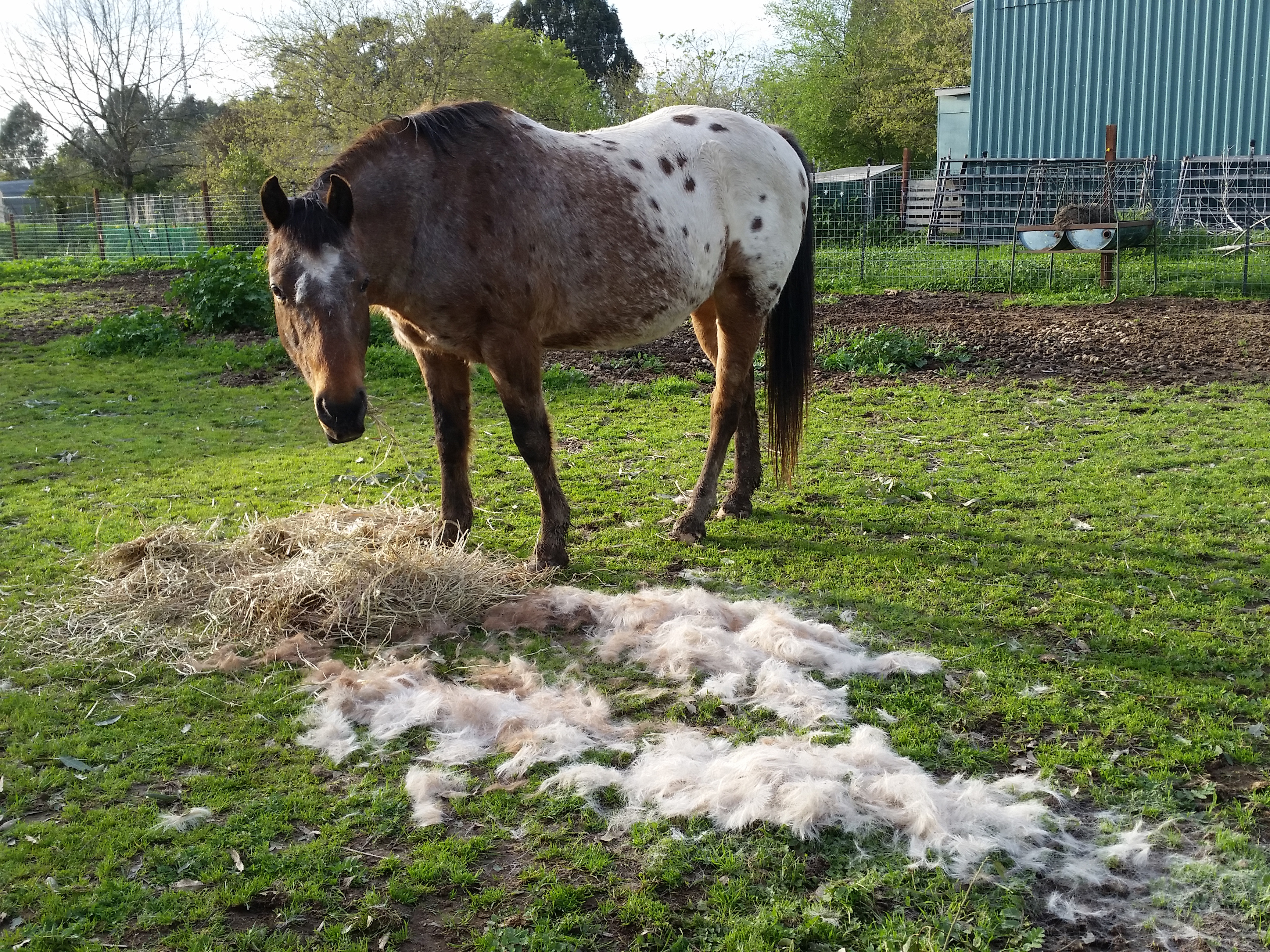By the time you get done reading this you will have a complete plan to get your horse sleek and ready for the show ring this summer. The Formation of Winter Coats.

Shed Out Your Horse S Winter Coat Tips Expert Advice On Horse Care And Horse Riding
The horse will have a short coat in the summer.

. Thats a lot of winter coat. Having to do the shetland with the shedder every night now to remove lose hair but still plenty again in the morning. However theres more to a winter coat than shedding aggravation.
This is common in older horses but does warrant further treatment. Good horse shedding tools can encourage circulation and prompt faster shedding. The first photo of my horse in my profile is taken in April this year and you can see he still has his fuzzy winter fur on while I.
2 of our three started shedding end of January 1 only has lightweight on and the other is naked the one thats not shedding is the youngest 18months and has a lightweight on. As the hours of daylight increase a horses winter coat begins to loosen and shed. Its linked to photoperiods.
What kind of coats do horses have in summer. Here in central Europe horses change their coats approximately in April but in April its already 20C if not more. They give a really healthy horse a sleek and shiny coat.
These horses can benefit from regular grooming and brushing that stimulate the follicles of the hair new growth and removal of the old winter coat. My horses are not clipped over the winter. Excessive hair growth called hirsutism and the inability to cast winter coats are the primary signs of Cushings disease.
Shedding is not triggered by temperature. All animals will eventually shed their coats on their own. 4 If the coat wont shed Hypertrichosis or failure to shed their winter coat may be a sign of pituitary pars intermedia malfunction better known as Cushings disease.
The hairs of a horses summer coat are much shorter and thinner. Through the winter nothing much changes until early spring when increasing daylight triggers the new hair to grow as the old coat sheds out. However temperature is not the culprit.
Most horsemen begin to suspect a problem in aged horses in late spring and early summer when affected horses fail to shed their wooly winter coats. As the hours of daylight increase a horses winter coat begins to loosen and shed. By the time the coat starts to change for summer in around August the coat has become thicker than a normal summer coat but not yet a full winter and will shed nicely into a fine summer coat.
Some horses may be naturally late in shedding their winter coat in the spring. Importance of proper nutrition to horse coat health. This phase continues until the full winter coat has grown.
I have come up with my top 10 tips to getting your horse to shed that heavy winter coat. Some other reasons why a horse is not shedding so well. Since days begin to shorten in June by the middle of Augustwhen winter may be the last thing on your mindyour horses winter coat is already starting to grow in.
Daylight and length of days determines when a horse will shed his coat. A horse with worms may not shed properly. Although patchy shedding occurs in most horses in the springtime as weather warms shedding that results in matting or clumping of parts of the hair coat often indicate a fungus infection.
Lots of grooming can be good for you. This winter coat is a natural blanket for a horse. This process started way back in late December but you usually wont see the obvious hairy results until now.
Um how to say this nicelynot enough grooming. To be shedding late or not at all- with no other health symptoms check your worming schedule first. After worming treatments the horse should shed the coat as normal.
In the south temperatures may reach 80 degrees one day and then plummet the next day to the 40 degree range. A horse with worms will often lack the ability to shed fully and on time. Try a grooming stone to speed shedding.
However if the horse becomes wet the hair will lose some of its ability to warm the air and heat will be lost. If we want to better manage our horses winter coats first we need to. If your horse seems.
It traps air warms it and keeps it close to the body as insulation. They shed their thick winter coats during. Each horse should shed on a consistent schedule each year.
A horse will naturally begin to form a winter coat when it becomes colder outside. This process started way back in late December but you usually wont see the obvious hairy results until now. Similarly in the depths of a miserably cold February it may be heartening to remember that within your horses hair follicles his sleek summer coat is already taking shape.
These short fine hairs protect your horse. Even though that timeframe may be different for each horse. Some horses who havent shed their hair on time will blow their winter coat after being wormed.
Clip during this time and you risk damaging the summer coat as I said above and your lines will last a lot longer as the coat does not shed much at all once the summer coat.

Help Your Horse Slick Off His Coat Expert Advice On Horse Care And Horse Riding


0 Comments